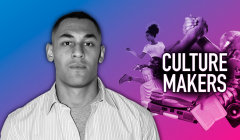
‘Subculture is the most powerful tool we have’
Louis Persent, Co-Founder and Creative Director at Weirdo on the power of embracing the niche
"Communicating [purpose] in an authentic way often comes down to words. The imagery is almost by the by. It’s the language that connects within your gut."

"Right now, this technology is limited in the voice you can choose, but that will change. The technology is developing. Tone of voice has a remit that expands so much further than it used to. It used to be words on a page; now it’s accent, sounds, pitch, speed."
Bee Pahnke
"Communicating [purpose] in an authentic way often comes down to words. The imagery is almost by the by. It’s the language that connects within your gut."
Bee Pahnke
Looks like you need to create a Creativebrief account to perform this action.
Create account Sign inLooks like you need to create a Creativebrief account to perform this action.
Create account Sign in